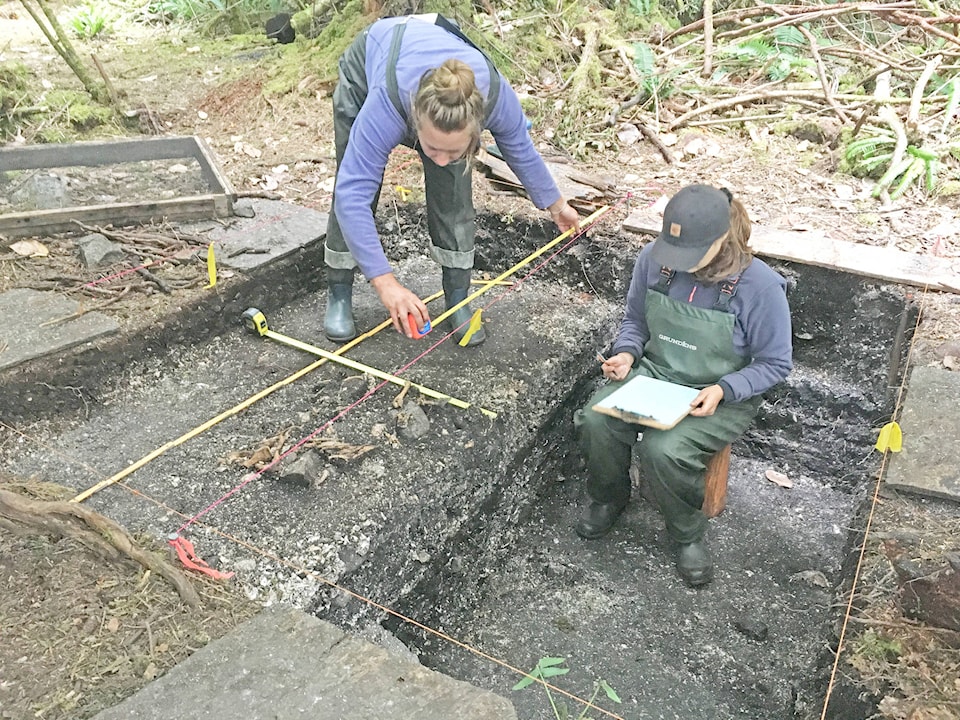A recent archeological find is revealing clues into West Coast life thousands of years ago.
The University of Victoria is working with the Pacific Rim National Park Reserve, the Tseshaht First Nation and the Bamfield Marine Science Centre to reveal glimpses of what life was like in the Broken Group Islands in the pre-contact era.
“It’s an archeological project, which is looking at human history through material remains. We’re working in the Broken Group Islands which is the Tseshaht First Nation’s ancestral territory,” said UVic assistant professor and scholar with the Hakai Institute Iain McKechnie.
The University is in the second year of a five-year collaborative project that involves annual summer excavations where students camp in the Broken Group Islands.
“The work is done under the direct guidance of the Tseshaht First Nation working in conversation and collaboration with the University of Victoria. The Pacific Rim National Park Reserve is supporting this work because it contributes to our mandate around protection and conservation of cultural resources,” said the Park Reserve’s Cultural Resource Management Advisor Caron Olive.
The students spent 16 days in July uncovering fascinating evidence during an excavation of Keith Island, where they discovered a beach campsite dating back 4,000 years and a village from roughly 2,000 years ago.
“We find all these different types of shellfish species. These places are places that people lived for a long time and left a huge compost pile out back of their house…They used that as fill to build new places, new houses down the block as it were,” McKechnie said. “They were actually creating land through strategic composting.”
He added the evidence suggests a large population lived off of local food sources successfully and sustainably for hundreds of years.
“That gives us an indication of how to consider a sustainable way of being in this place. There was lots of communities out here and there’s very few today compared to what there was. The population of Barkley Sound was undoubtedly higher 300 years ago than it is today,” he said adding the area would have been bustling with activity. “That kind of sense of a busy place is one thing we are learning about and we want more people to grapple with. There is this beautiful archipelago that is relatively empty today, but it was a busy, bustling place.”
He said the team found bones from a variety of species, including dolphins, albatross, northern fur seals and lingcod.
“Out here people are relying on foods that they can paddle five minutes off the island and go fish…All the sport fishing that you’d ever want to do, people were doing, but they were doing it in a different way than today’s fisherman,” he said. “Kelp fishing line and ground stone fishing lures with little bone points that are sharpened out of deer bone to make a composite fish hook. There is harpoons they’re trying to hurl from a canoe into a seal that doesn’t want to be spotted by people…People were very skilled at those activities and they are well represented in archeological records that we’re excavating.”
He said stone tools were also found, that suggest a potential far-reaching trade network.
“We found a piece of tool stone that is obsidian, which is quite exciting for us because we can source where that came from. Sometimes, these obsidian are traded from very far away and they reflect indigenous trade networks that are thousands of years old. That’s potentially going to be able to connect a piece of stone in the Broken Group to a place maybe as far away as Oregon.”
He suggested the most exciting discovery made this summer is an 800 year-old domestic dog skeleton.
“We haven’t ever had the chance to uncover this detailed, small bodied dog, which is consistent with the Coast Salish wool dog,” he said adding the breed was raised for its pure white fur, which was used to
b intricate blankets that were given as gifts at marriages and potlatches,
“Political relationships are established with these wealth items, these blankets, and the dog is the key part of that.”
He added a chemical composition of the dogs bones would be conducted that could reveal its diet.
“How are they feeding the dog? We’re beginning to be able to tell that by looking at the chemical composition of its bones. Is it a specific kind of sea food? Or is it just feeding from the scraps from everyday meals that people are having?”
Caron said the history being unearthed is invaluable cultural knowledge for the Park Reserve to share.
“It goes to the really deep and rich history of the Broken Group Islands long before the park was ever established and understanding and appreciating the natural and cultural heritage that Parks Canada protects,” she said. “For the Park Reserve, it’s celebrating the human story of the Pacific Rim.”
